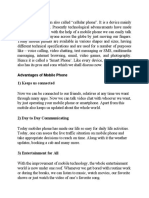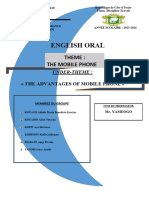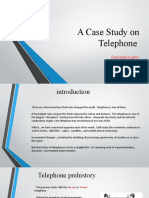0% found this document useful (0 votes)
68 views7 pagesMobile Phones Presentation English
The presentation provides an overview of mobile phones, detailing their history, uses, advantages, and disadvantages. It highlights the evolution from early mobile devices to modern smartphones, emphasizing their multifunctionality and impact on communication and daily life. However, it also addresses concerns such as addiction, health issues, and privacy risks, advocating for responsible use.
Uploaded by
tyw8tttbp7Copyright
© © All Rights Reserved
We take content rights seriously. If you suspect this is your content, claim it here.
Available Formats
Download as DOCX, PDF, TXT or read online on Scribd
0% found this document useful (0 votes)
68 views7 pagesMobile Phones Presentation English
The presentation provides an overview of mobile phones, detailing their history, uses, advantages, and disadvantages. It highlights the evolution from early mobile devices to modern smartphones, emphasizing their multifunctionality and impact on communication and daily life. However, it also addresses concerns such as addiction, health issues, and privacy risks, advocating for responsible use.
Uploaded by
tyw8tttbp7Copyright
© © All Rights Reserved
We take content rights seriously. If you suspect this is your content, claim it here.
Available Formats
Download as DOCX, PDF, TXT or read online on Scribd
/ 7























































































